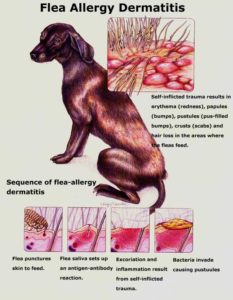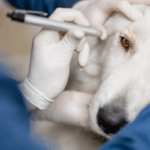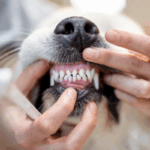Even our non allergic dogs experience only minor skin irritation in response to flea bites. Even with the presence of dozens of fleas, there can be very little itching. On the other hand, the flea allergic dog has a severe, itch-producing reaction to flea bites, caused by the fleas saliva.
The symptoms include intense itching, chewing, licking and scratching, causing hair loss and in more severe cases open sores and scabs on skin, allowing a secondary bacterial infection to begin. The most commonly involved area affected is the rump (just in front of the tail).
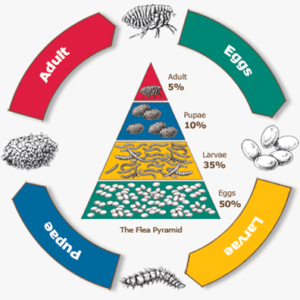 FLEA LIFECYCLE
FLEA LIFECYCLE
Although you are only able to see adult fleas on your pet, there are actually four stages of the flea life cycle. If the temperature and humidity of the environment are favourable, the whole flea life cycle from egg to adult can be completed in just 7-10 days!
It is a surprisingly complex cycle, believe it or not adult fleas only make up 5% of the flea population. Eggs make up a whopping 50% and hatch into larvae between 1 to 10 days.
Flea larvae, feed on adult flea faeces as well as organic debris found in their environment, which is essential for successful development.
Once the larvae have fully developed, they produce a silk like cacoon into which they develop into Pupae. The flea (pupae) can survive up to 140 days in this cacoon, and during that time are resistant to insecticides applied to the environment.
Within 5-10 days the adult flea emerges. They are stimulated to emerge by physical pressure, carbon dioxide or heat (detecting the presence of either animals or people). Upon emerging, they feed on their first ‘blood meal’ and females can begin egg production within 48 hours.
COMMONLY ASKED QUESTIONS …
I HAVE NOT SEEN FLEAS ON MY PET. DOES THAT MEAN THAT NONE ARE PRESENT?
No. When a pet is heavily infested, it is easy to find them. However, if the numbers are small, look for what we call ‘flea dirt’.
Flea dirt is the faecal matter from the flea which contains digested blood. It looks like coarsely ground black pepper and varies from tiny black dots to 1/2mm long tubes. For easy identification, place the matter on a piece of tissue and add one or two drops of water, a red stain will become apparent as the water soaks into the digested blood.
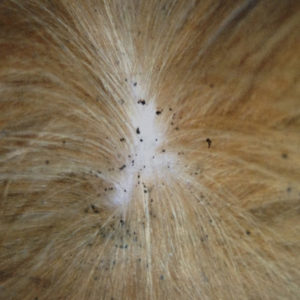
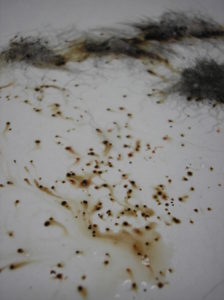
Successful flea control must completely rid your pet of fleas and it must rid the pet’s environment of fleas also. EVERY dog and cat in the household must be treated to effectively manage the flea life cycle.
CONTROLLING THE FLEAS
Fleas must be controlled both on the pet and in your pets environment.
There are many flea treatments available on the market, ranging from chews, to injections (cats only), to liquid spot on treatments.
What price would you pay for 6 mo nths of flea control for you cat?
You could pay $79.95 for a flea collar your cat might lose! (Sereso long acting flea collar), or $77 for a large pack of ADVANTAGE, but you have to catch your cat every month for 6 months and apply a messy pesticide to the back of the neck without spilling it or getting scratched.
We can do all the work for you in a one-off visit by giving a long acting safe injection that will treat fleas for 6 months. No risk of collar injury or loss. No messy application of pesticides for you to do at home!
PROGRAM injection for cats retails at $80.30 and lasts for 6 months.
Call us now on 9878 3033 and register your cat for a flea injection to protect him / her over the summer months!


